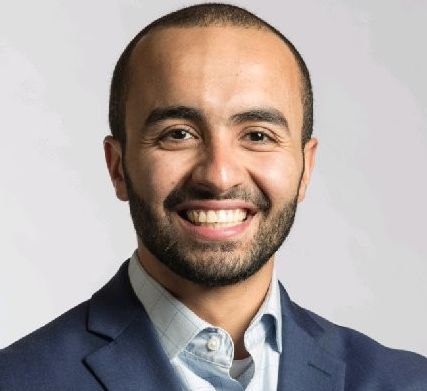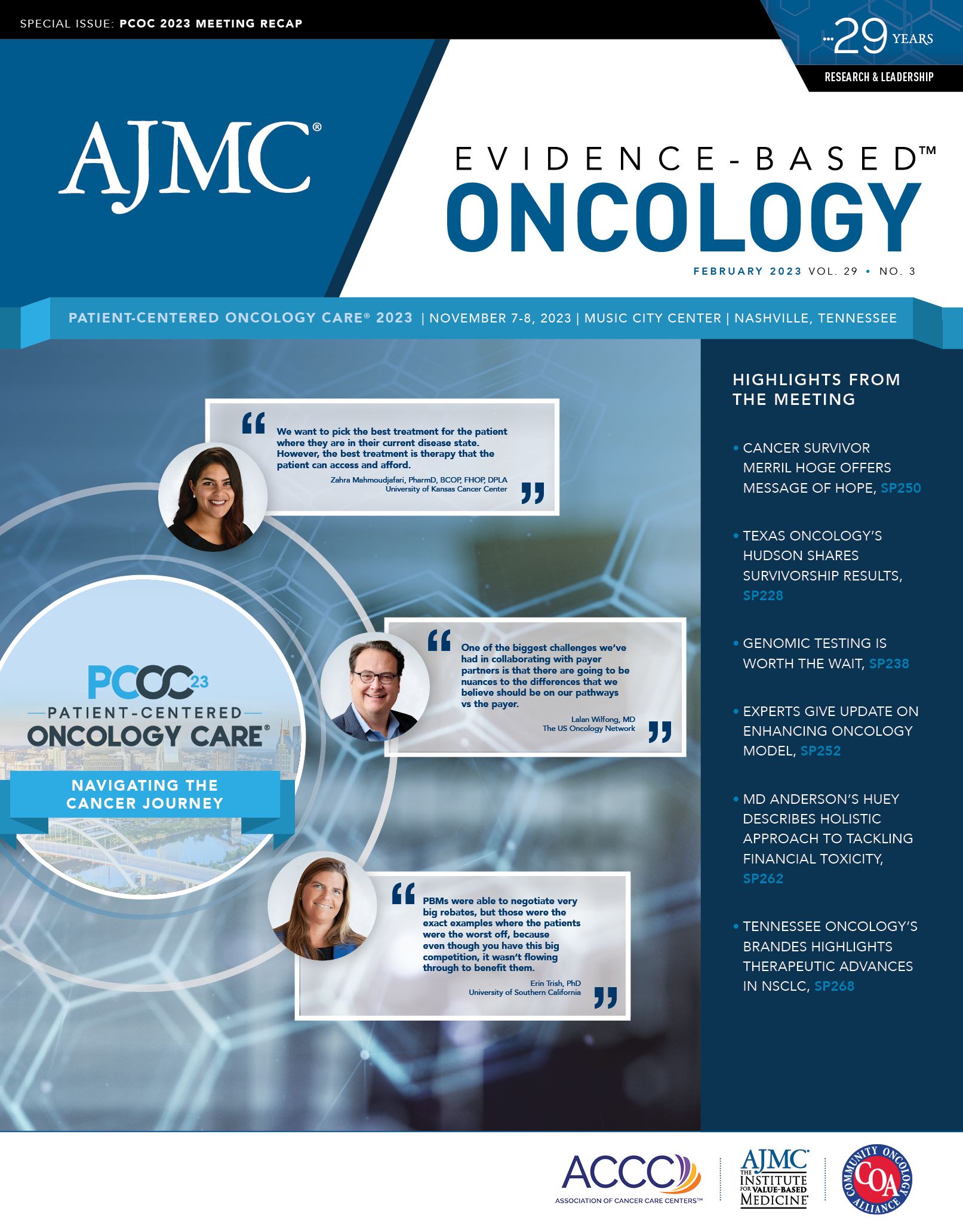- Center on Health Equity & Access
- Clinical
- Health Care Cost
- Health Care Delivery
- Insurance
- Policy
- Technology
- Value-Based Care
Kirollos S. Hanna, PharmD, BCPS, BCOP, FACCC, Discusses Chemotherapy Shortage Challenges and Solutions
From an interview conducted during Patient-Centered Oncology Care 2023.
Kirollos S. Hanna, PharmD, BCPS, BCOP, FACCC | LinkedIn photo

Kirollos S. Hanna, PharmD, BCPS, BCOP, FACCC, director of pharmacy services at Minnesota Oncology, talked with Evidence-Based Oncology about chemotherapy shortages and what Minnesota Oncology does to work around the resulting challenges while identifying which patients are most in need of access to the drugs.
This interview has been lightly edited for clarity.
EBO: Can you provide insight into the challenges that treatment centers are facing due to the cisplatin shortage? How is Minnesota Oncology dealing with these challenges?
Hanna: Drug shortages are things that we’ve been dealing with for decades. To me, it really is a surprise that this far into everything that we have seen—and the challenges that we have historically faced—there hasn’t really been a strong legislative push around drug shortages. We need to figure out a better way to do this. In the grand scheme of things, the generic market is not a strong business—it’s not a lucrative business, there’s not a lot of margin there—but, unfortunately, the bottom line is many of our generic drugs are the standard of care for treating patients. So we have to do something about the generic market because although immunotherapy, targeted therapy, etc, have impacted many disease states, they haven’t displaced cytotoxic, generic chemotherapy in the grand scheme of things.
When you look at drug shortages and how to navigate them, it’s challenging. There is no good model in the United States that can help us predict what’s to come. There is no good strategy. We could wake up one morning [and discover that] a major manufacturing facility of a generic product that makes 50% of the US allocation is all of a sudden having quality control issues, or it’s gone under, or there’s a hurricane or a storm, or whatever it may be. These are some challenges that I think we could do a much better job of addressing, whether it [is adding] facilities, figuring out various ways [to address challenges], or outsourcing to other countries.
One of the key challenges that we faced recently is the cisplatin shortage, which has received a lot of media attention…. The FDA contracted with a company in China, they brought in this resource, etc. But then again, we’re now facing payer challenges and how we’re billing all of that, etc. We can clearly implement or think of novel strategies for doing things, but look where we are today. Vinblastine, a curative [therapy] for Hodgkin lymphoma, is on shortage; fluorouracil for patients with colorectal cancer was on shortage; the cisplatin [shortage] led to carboplatin shortages. We just recently had another Hodgkin lymphoma drug on shortage besides vinblastine that’s used in ABVD [doxorubicin (Adriamycin), bleomycin, vinblastine, and dacarbazine; the latter is in shortage]. There are just a lot of things that we’re continuing to see, but it doesn’t seem as though there’s been much improvement in the overall process.
Now, again, this is where I think pathways can be limited, and you do need to carve out areas within your institution where going to a different therapeutic approach isn’t considered off-pathway. Whether you have a payer relationship or you have certain incentives in your institution, if your pathway is recommending cisplatin but you have to go carboplatin and that’s not preferred on pathway, your hands are tied. One thing that we’ve done to alleviate some of these shortages within our institution is we evaluate our quarterly utilization of the top 15 generic drugs. And we have started to build a much healthier par level, just the bare minimum that aligns with the quarterly utilization. Because quarter over quarter, our utilization is not likely to significantly change. This has helped us in the grand scheme of things.
EBO: Some physicians have had to resort to alternative treatment strategies and even more expensive novel therapies as a result of the chemotherapy shortage. Is this happening at Minnesota Oncology as well? Would you elaborate on the potential impact of these substitutions on patient care and outcomes?
Hanna: Drug shortages have definitely led us to adopt different approaches. In some cases, it’s subtherapeutic approaches. The data may recommend one therapeutic modality because that is where the majority of the data is. But then again, from a pharmacology perspective and understanding how these drugs work, some may adopt alternatives that may be subtherapeutic. I’m not really familiar with many approaches within the drug shortage space that have led to a more expensive therapeutic alternative, although I’m sure there might be a handful of patients who could benefit from a slightly higher therapeutic alternative, depending on what that looks like. But again, the key thing is that we can’t optimally treat our patients if we don’t have the drugs that we need. Depending on the severity of the shortage, we have historically identified subsets of patients we’re going to allocate the drug to, which are curative intent patients.
Going back to the cisplatin shortage being one of the things that we recently faced, you look at patients with bladder cancer in certain lines of their disease, [and] cisplatin has the best data, and it leads to curative intent outcomes. You look at those with testicular cancer; it’s very, very similar. These young patients have a very long time to live and again you look at the BEP [bleomycin, etoposide, and cisplatin] regimen or the VIP [etoposide, ifosfamide, and cisplatin] regimen; a lot of these regimens incorporate cisplatin for curative intent. There are no data around carboplatin; carboplatin has, in some cases, also been inferior.
When we go down that route, it’s where you start to carve out certain subsets of patients where there is no therapeutic alternative. That’s kind of been the key area where we’ve had to either allocate per patient, depending on the severity. So if we know a patient is coming in for 5 or 6 cycles of chemotherapy, we want to make sure that we have drug X for him to meet those number of cycles. We don’t want a patient to come in, be treated for 3 or 4 cycles, and then all of a sudden we don’t know where the trajectory is going to head in terms of a drug shortage and what we’re going to be allocated on any weekly or given basis.
Ultimately, we have to do it like that in terms of curative intent, where we’re allocating to specific patients.

Oncology Onward: A Conversation With Dr Debra Patt of Texas Oncology
August 1st 2023Debra Patt, MD, PhD, MBA, joins hosts Emeline Aviki, MD, MBA, and Stephen Schleicher, MD, MBA, for episode 2 of our newest podcast, "Oncology Onward: Conversations With Innovators and Changemakers in Cancer Care."
Listen
